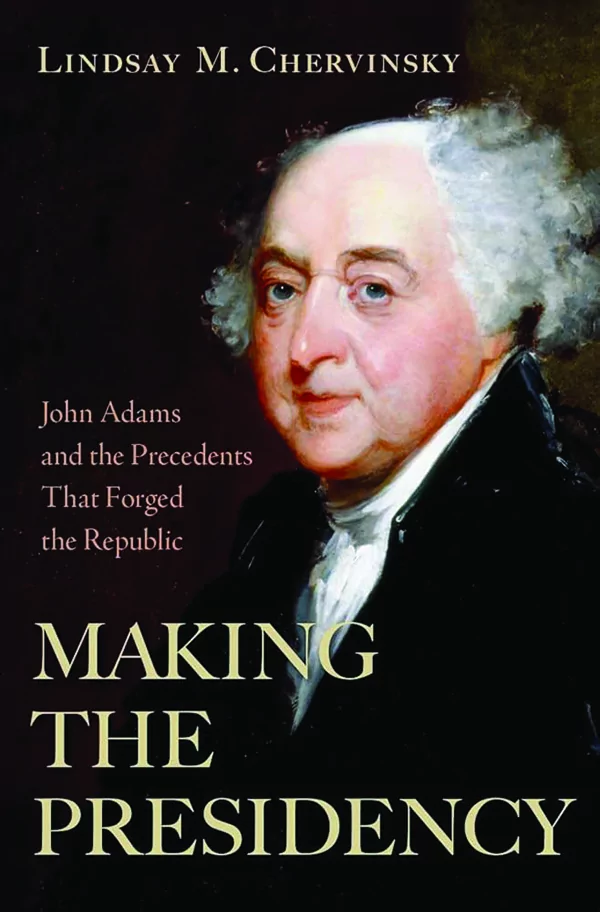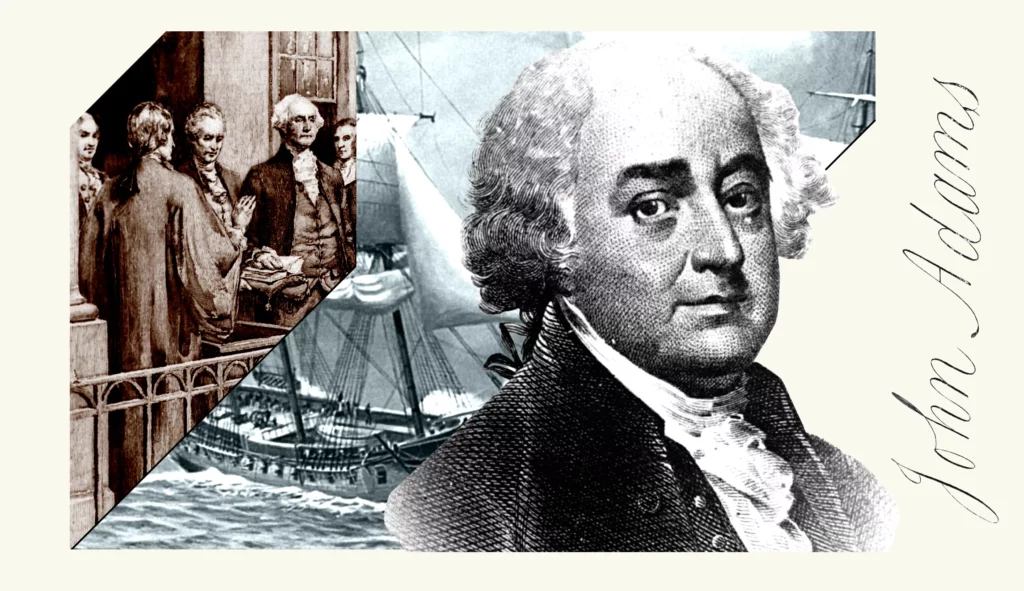Replacing a legend is one of the most thankless jobs. Each year, 20-something athletes crumble under the pressure of taking the place of their franchise’s departed hero, even with a small army of coaches and consultants behind them. The struggle to live up to enormous expectations is one of the many little dramas that make sports meaningful.

John Adams was much more seasoned than any rookie point guard or quarterback, but few people in history have had such big shoes to fill and so little help to do it. In Making the Presidency, Lindsay Chervinsky describes how Adams kept the country united during one of the most dangerous periods in history.
To the extent that most people think of the founding, they tend to focus on the Declaration of Independence, the Revolutionary War, and the Constitution. But when Adams took the oath of office, it was still not clear how the government would actually work. George Washington tried to establish rules for the presidency, but no one knew how the role would change once the father of the country no longer held it. As Chervinsky puts it, “George Washington created the presidency, but John Adams defined it.”
He barely got the job. Alexander Hamilton, the Federalist Party’s de facto chief, disliked Adams and preferred South Carolina’s Thomas Pinckney. At the time, voters cast ballots for electors rather than for the actual presidential candidates, so all he needed to do was convince a handful of South Carolina’s Republican electors to vote for their leader, Thomas Jefferson, and their native son. News of the scheme reached New England, though, and their electors dropped Pinckney. Jefferson thus came in second by three Electoral College votes and got the vice presidency.
Adams then had to figure out who would advise him. Washington realized that most of his second-term Cabinet members were not nearly as good as the earlier set that included Hamilton and Jefferson. But because Washington did not invite then-Vice President Adams to any Cabinet meetings, the new president had no idea. The Cabinet members also did not know if they should keep their posts or resign to make way for the new administration. Washington encouraged them to remain, and Adams kept them.
The day after the inauguration, the new president discovered how troublesome most of his Cabinet would be. They did not want to accommodate Jefferson, as Adams did, and they expected to have much more control over their departments than Adams would allow. Most of the Cabinet leaked virtually all internal deliberations to Hamilton.

The news from abroad was even worse. In 1796, Paris authorized French vessels to attack American shipping, setting off the “Quasi-War” that defined Adams’s presidency. The Federalists who dominated Congress wanted to declare war, but Adams convinced them to send a peace delegation while undertaking “defensive measures” such as fortifying the coasts. Adams mostly got his pick of envoys despite his secretary of state’s best efforts, but they bungled their mission. When the French government’s unofficial emissaries demanded bribes even to open discussions with Adams’s men, most Americans were outraged.
But not all of them. Jefferson’s party still sympathized with the French Revolution, and Hamilton’s wing of the Federalists demanded that the government raise an army to stamp out the Francophiles. Both the large army and accompanying taxes were unpopular, though, and armed tax protests broke out even in Federalist-leaning parts of the country. Adams had to keep in check the radicals in his own party, who trampled civil liberties with gleeful abandon, as well as the Jeffersonians. Washington agreed to command the army, but unlike during the Revolutionary War, he also demanded the authority to pick his own subordinates.
The threat of mass violence was never far off. When Adams instituted a national day of “Solemn Humiliation, Fasting and Prayer” about the crisis with France, a mob of Jeffersonians came close enough to the President’s House that Adams and his clerks grabbed weapons to defend themselves. Eventually, a counter-mob of Federalists charged in, and the militia restored order. Jefferson and his running mate, Aaron Burr, tied in 1800, and the governors of Pennsylvania and Virginia threatened to march on Washington with their militias if the Federalists cut a deal with Burr or passed new electoral laws.
Despite these enormous pressures, Adams managed to keep the country together. He slow-rolled the army while building up the navy, which was more useful for defending American shipping and less helpful for oppressing Americans. He cobbled together another diplomatic mission that achieved peace with France and tamed his unruly Cabinet. “After Adams,” Chervinsky shows, “all department secretaries understood they served at the president’s pleasure” instead of forming a “parliamentary-style administration, in which the president would share power with the unelected Cabinet.”
Making the Presidency focuses on Adams’s impact on American institutions, and Chervinsky’s excellent storytelling makes even the legalese enjoyable. She is the executive director of the George Washington Presidential Library and uses her deep knowledge of the Founding era and keen eye for detail to bring even the more obscure characters to life. The book’s only real flaw is that Chervinsky occasionally uses some of the clunky phrases that predominate in contemporary news instead of sticking to her own prose or draws inexact parallels to recent events.
This is only a minor quibble, though, since the book shows how relevant the founders are even without the references to current events. Too many academics, all of whom really should know better, treat the founders as shameful relics of a bygone era or as bloodless amateur political philosophers. Chervinsky instead captures the ideas, the rivalries, and the follies that drove these Americans to build the country we enjoy today.
They only got there because Adams — never the most loved, respected, nor admired of them — relentlessly pushed ahead, sometimes dodging the obstacles, sometimes stumbling through them. It’s another of the dramas that make life meaningful. But unlike in sports, the stakes were immense. As should be our gratitude.
CLICK HERE TO READ MORE FROM THE WASHINGTON EXAMINER
Mike Watson is the associate director of Hudson Institute’s Center for the Future of Liberal Society.
